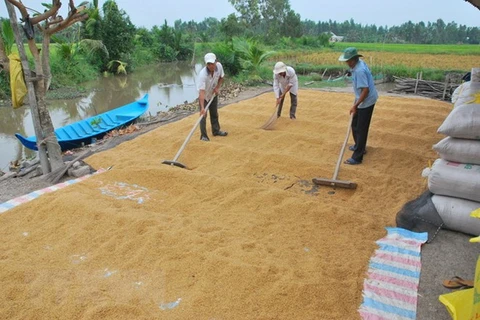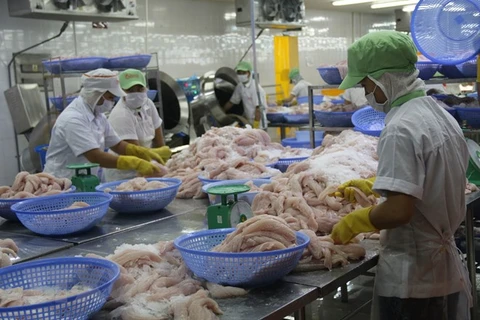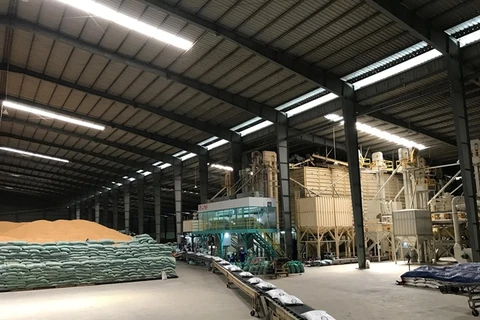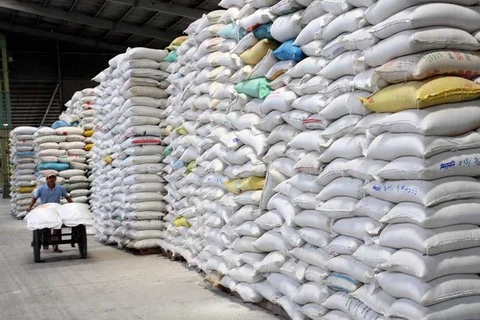HCM City (VNA) – Vietnamese rice exports are expected to revive in the last quarter of the year following four months of stagnation, boosted by new purchase demand in some markets.
Tough seas for Vietnamese rice
In the first eight months of the year, Vietnam earned 2.2 billion USD from exporting 4.4 million tonnes of rice, a year-on-year surge of 22.1 percent in value and 6.8 percent in volume.
Despite the robust growth in the period, rice exporters said that rice market has been stagnant since the end of May as demand for Vietnamese rice declined in such traditional markets as China, Indonesia and the Philippines during Quarter II and Quarter III.
Thai rice, which was sold at low price, really worried Vietnamese exporters. Not many rice consumption contracts were signed during the period as Vietnamese rice became less competitive.
According to Nguyen Van Don, director of Viet Hung Co.,Ltd in Tien Giang province, rice was exported in dribs and drabs, with some 1,000 tonnes of rice sold per week. With this pace, his firm could not realise the set target for the whole year.
Notably, China’s sudden imposition of a 50 percent tariff on rice imports from July affected rice consumption in this market, especially sticky rice. At some point, Chinese traders paid only 380 USD per tonne for sticky rice as compared to 530-540 USD per tonne at the beginning of the year.
Statistics from the Ministry of Agriculture and Rural Development showed that although China remained the largest importer of Vietnamese rice in the first seven months of this year, sale to China only accounted for 24.7 percent of the total shipments, which is much lower than last year’s figure of 40 percent.
In seven months, Vietnam sold 927,000 tonnes of rice to China and gained 491 million USD, reducing 32.8 percent in quantity, and 21.2 percent in value as compared to the same time last year.
Upbeat signs for rice exports in Q4
However, the ministry has predicted a bright prospect for rice exports as purchase demand is expected to pick up in China, the Philippines, Indonesia, and Iraq.
The Philippines wants to import additional 500,000-800,000 tonnes of rice by the end of this year to refill its exhausted reserves and to stabilise domestic rice price.
Chinese enterprises have recently worked with those from Mekong Delta region to seek cooperation in rice trade. Meanwhile, Indonesia and African countries also have high demand for rice import in response to output decline due to floods and storms.
Local firms are seeking ways to boost sticky rice shipments to Indonesia to reduce independence on Chinese market. The move has made sticky rice price slightly increase to 440 USD per tonne instead of below 400 USD per tonne in July and August.
However, Lam Anh Tuan, director of Thinh Phat Co., Ltd, said that Vietnamese rice still faces challenges as it is sold at equal or higher price as compared to competitors, and most of the importers like the Philippines and Indonesia prefer low prices.
Thus, relevant authorities should stay prudent when negotiating, he suggested.-VNA
VNA

























